TOPO
Congost de Montrebei, Corça
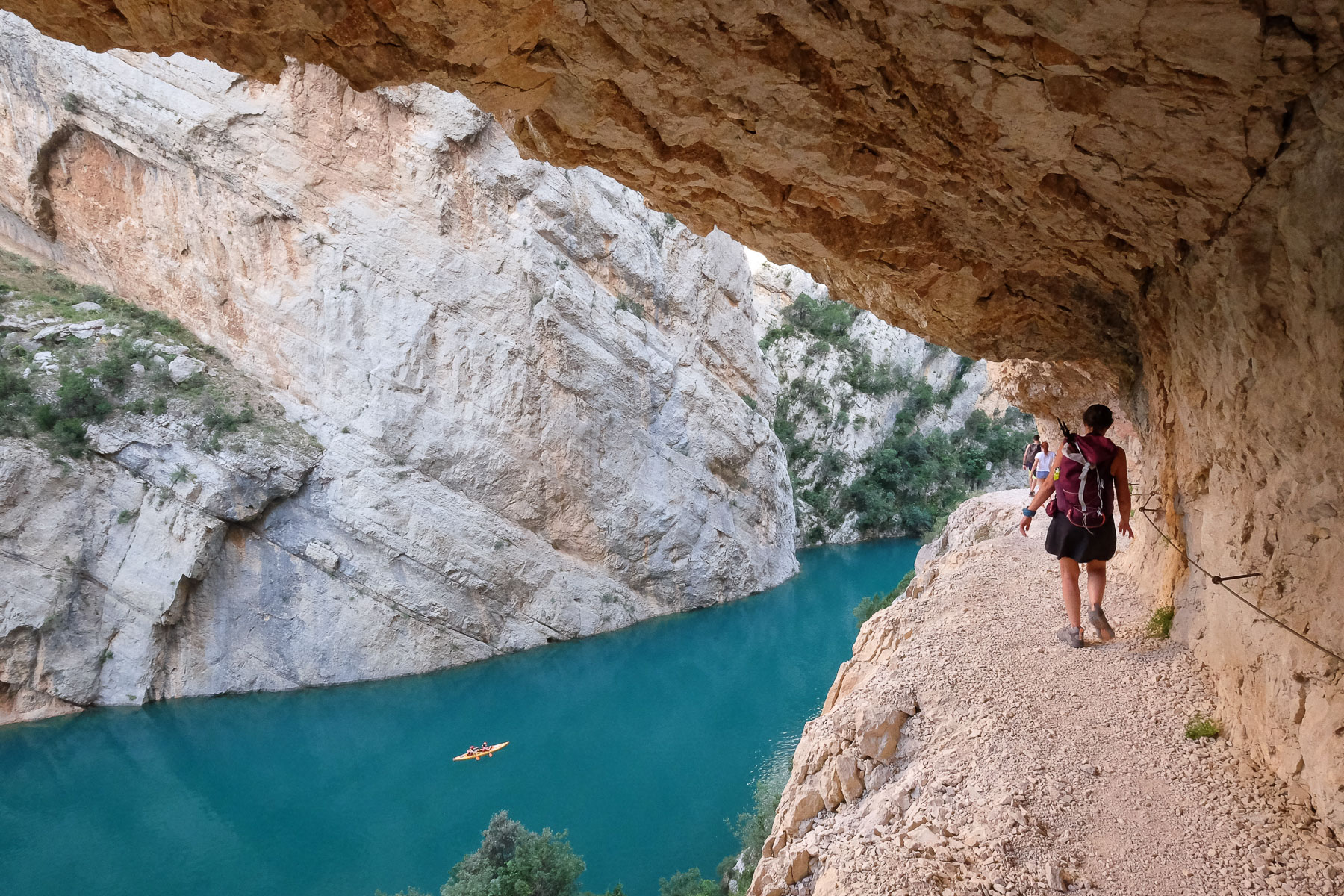
Sur le sentier équipé dans les gorges
The congost de Montrebei forms an impressive gorge between 2 immense rock faces, allowing the limpid waters of the Noguera Ribagorçana, the natural border between the provinces of Catalunya and Aragon, to flow through. An equipped path in the cliff on the Catalan side, following the GR1 itinerary, takes you from Corça in the south to Pont de Montanyana in the north of the congost. To complete the picture, a small suspension bridge on the Aragonese side leads to the Pasarelas de Montfalco, an aerial route suspended from the high cliffs overlooking the Pantano de Canelles. The scenery is spectacular, the views over the gorge splendid and the route easy but very aerial. The only drawback is that the area is very busy, especially in summer, both on the rock and in the water, with many kayakers also paddling through the gorges from below. An exceptional place, where you can also discover superb via ferratas and dry canyons in the Pardina barranc.
Technical summary
Type ✦ Hiking, equipped trail
Location ✦ Corça, Ager
Region ✦ Catalunya
Country ✦ Spain
Orientation ✦ South
Max altitude ✦ 800m
Distance ✦ 17.5km
Dénivelé ✦ 1120m
Difficulty ✦ E3 / T3 / R2
Duration ✦ 6h to 7h
Interest ✦ ★★
Access to the place
The option chosen here is to start on the Catalan side, from La Pertusa. Go to Ager on the C12 linking Tremp to Leida and turn off onto a very small road that leads to the village of Corça. From here, continue towards Ermita de la Pertusa. The road is very narrow and in poor condition in places. Before the hermitage, park below on the left in a large parking lot.
Itinerary description
Hiking to the start
From the parking lot, walk west along the road for a few minutes to reach the end, in the form of a parking lot, at the cliff where the Pertusa hermitage is perched.
Course 3h à 4h
The itinerary is long and includes 2 round trips: the equipped gorge trail and the optional Montfalco footbridges. The GR1 up to the entrance to the gorges is the most physical and least frequented part. After that, it's crowded, with little change in altitude, but the most spectacular part. We made a U-turn in the gorge just as we exited the narrow passage and it opened up to exit to the north. The gorge path is equipped with a lifeline (cable) along its entire length, but is not protected at all on the empty side. The footbridges, on the other hand, are built with a railing on the empty side, which doesn't make the route any less aerial and vertiginous, but it's more reassuring.
Part 1: From Pertusa to the entrance to Congost de Montrebei (1h30 to 2h)
Head north on the GR1 path and after a few minutes on a balcony overlooking Lac de Canelles, descend to cross the Pardina torrent. Climb back up on the opposite side to pass by the ruins of the Mas Carlet refuge. The path then twists and turns upwards, quite steeply and for quite a while, before finally heading north-west and passing a platform with a lovely view of the Aragonese wall and a first glimpse of the gorge on the summit of Serrat del Seguer (mirador). Here, the path crosses back to the north-east to pass the ruins of a second abandoned refuge. Then it's a long descent through the undergrowth of the Boiga de la Jaumeta until you reach the fork in the path leading from the bridge. Continue northwards, descending a little more, and soon you'll find yourself at the entrance to the gorge, where the equipped path starts.
Part 2: Montrebei Congost equipped trail (30')
This is a passage on the side of the wall, in places artificially dug out, but also supported by natural ledges. The path is fairly wide and not technically difficult. You can hold on to the cables the whole way. However, the route is quite aerial, several dozen metres above the water. The views from the interior are impressive, with sculpted limestone walls almost 500m high on either side of the gorge. There are several watchtowers with benches to admire the geological formation, and a small tunnel in the middle. In the first part, you can climb up to the Cova de las Gralles.
Once you've completed the narrow sections, you can turn around without leaving the gorge altogether, as the footbridge route awaits you. But if you just want to go up and down the gorge, you can go further and exit completely before coming back. Lots of people on this section.
Part 3: Montfalco footbridges (optional, 1h to 1h30)
Repeat the gorge trail in the opposite direction, then go back up to the fork and descend to the bridge over the lake. There are steps leading up to the suspension bridge, which you cross to pass into Aragon. Here, you can swim below and turn back without having to do the Pasarelas.
For the footbridges, climb the steep ramp on the opposite side on a path equipped with steps and protection cables to find the 1st section of footbridges to descend. At the bottom, follow the path which continues southwards, climb a little and cross a talweg before finding the second section of footbridges, which are shorter but perhaps more impressive, as they are situated above an overhanging slope.
On leaving the footbridges, and before making your way back, you can descend along the wall to find a small cove for a swim. Crystal-clear water, spectacular scenery, but a lot of kayakers also stop here on their itinerary...
Back
From the end of the footbridges (or from the bridge or the GR1/bridge junction), you have to go in the opposite direction. The climb back up to the Pardina barranc is fairly long, and after passing the ruins of the Mas Carlet refuge again, there's a final steep climb to the Pertusa parking lot.
Ressources
Topo of the route on topopyrenees.com from the Montfalco refuge.
Topo des Pasarelas de Montfalco from the Aragonese side.
Topos of the Montrebei via ferratas, from the Pertusa.
Topos des canyons secs du barranc de la Pardina, from La Pertusa.







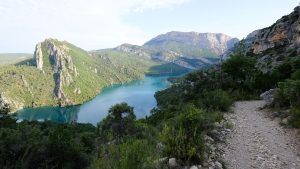
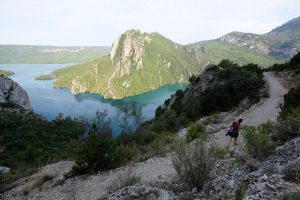
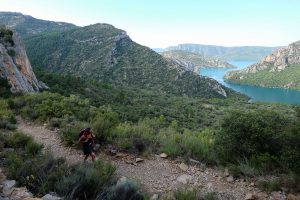
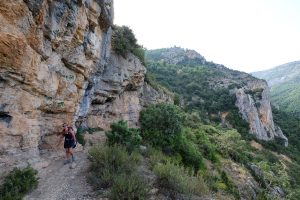
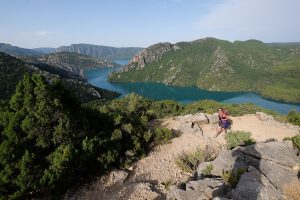
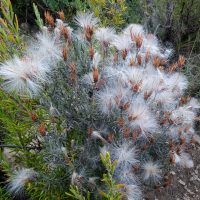

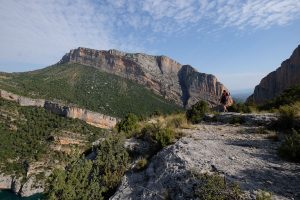

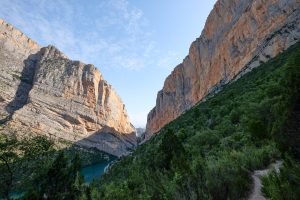
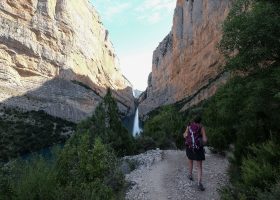
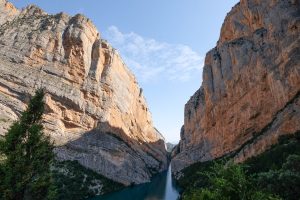
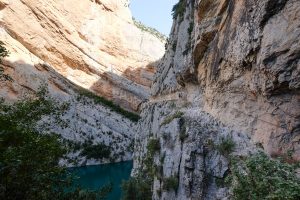
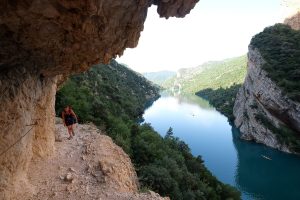
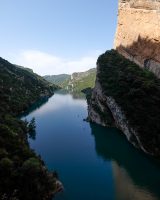

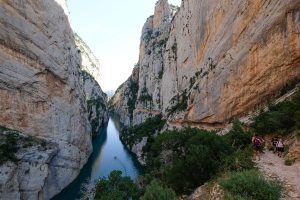

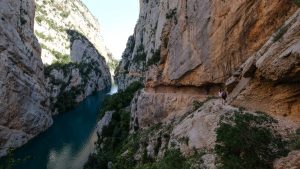

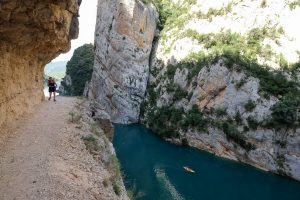
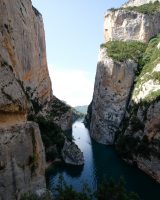


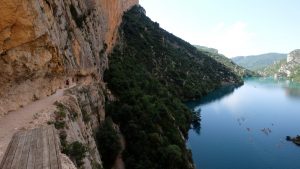
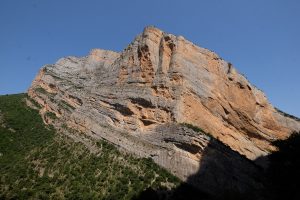

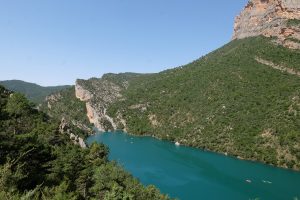
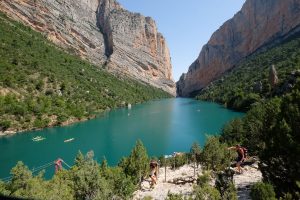
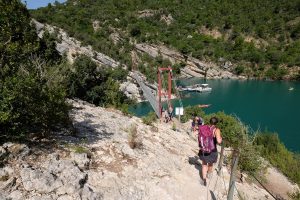
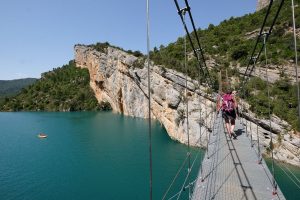

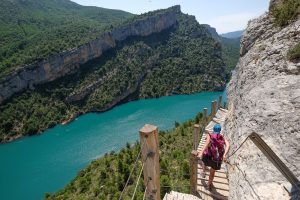


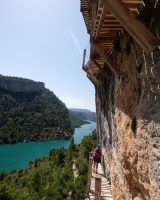
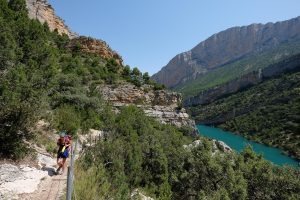
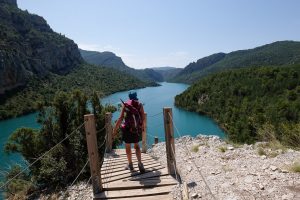
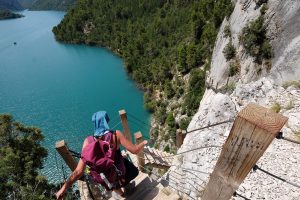

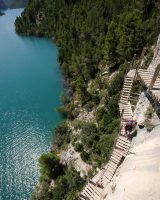
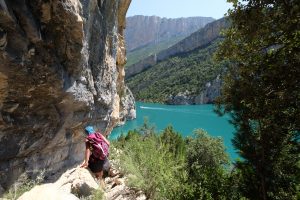

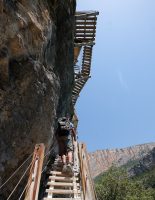
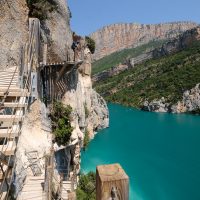
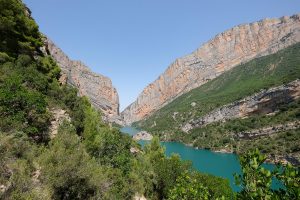
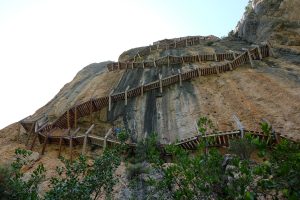
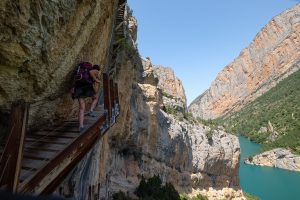
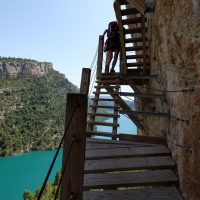




Leave a Reply